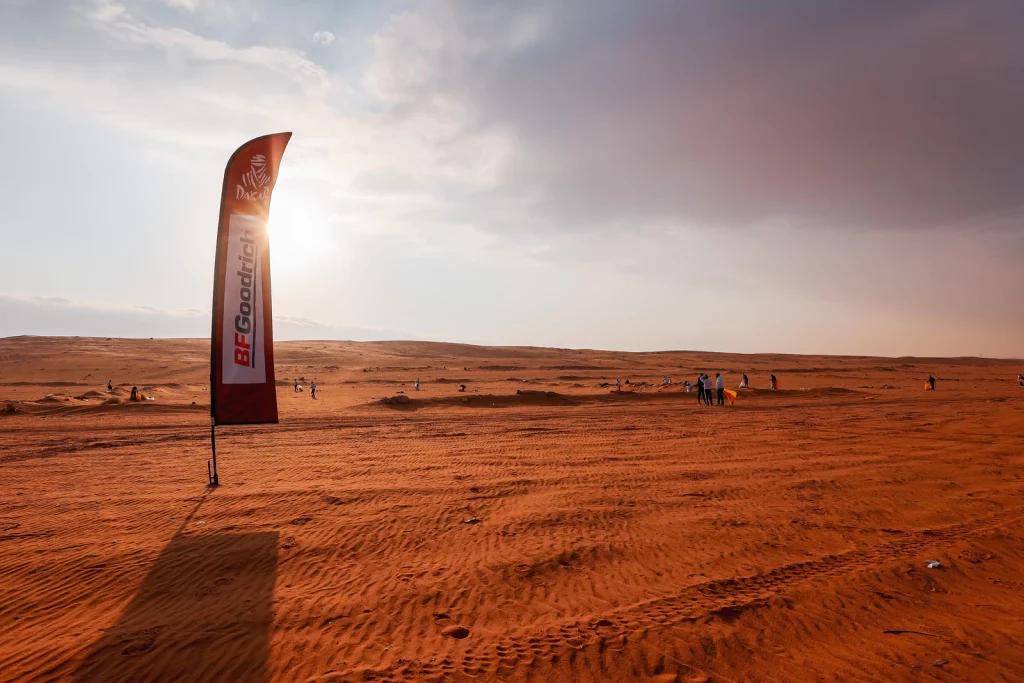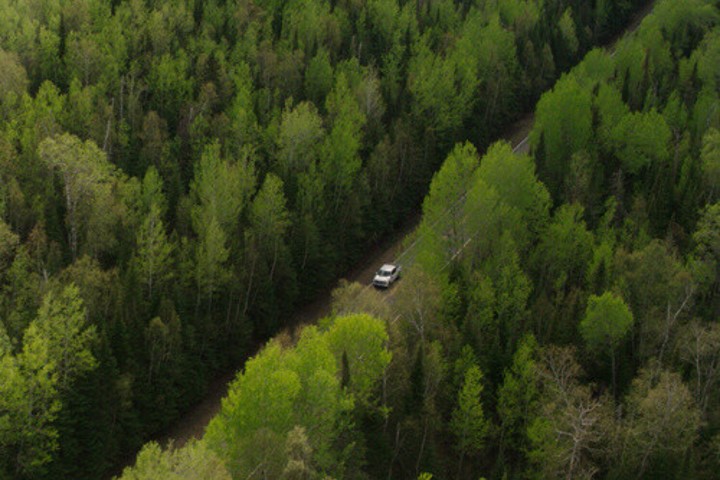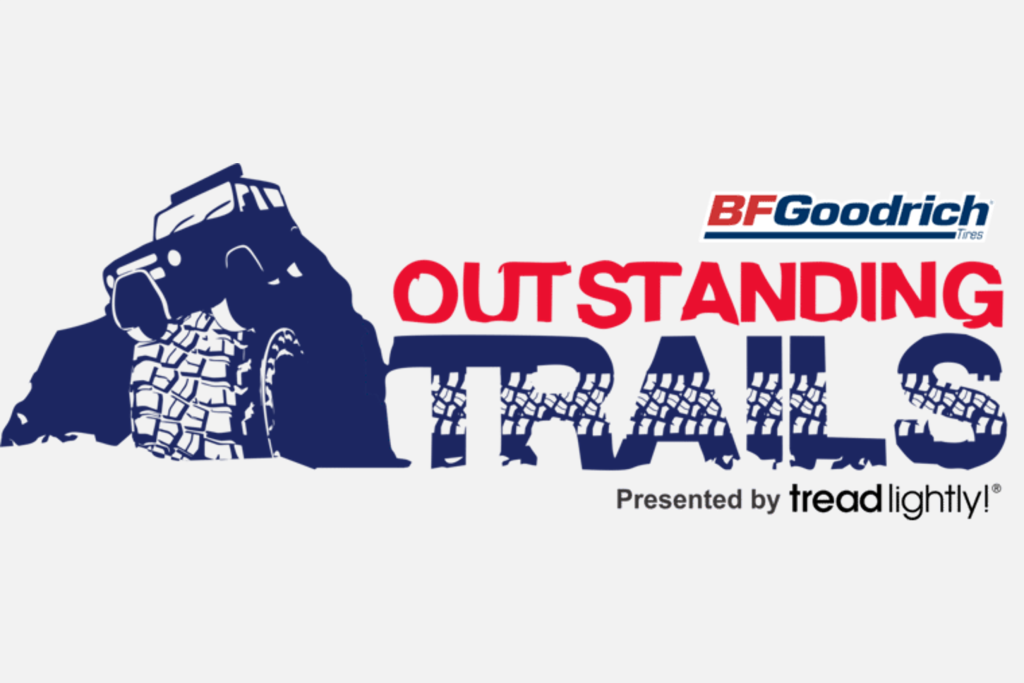Responsible Off-Roading: Not an Oxymoron
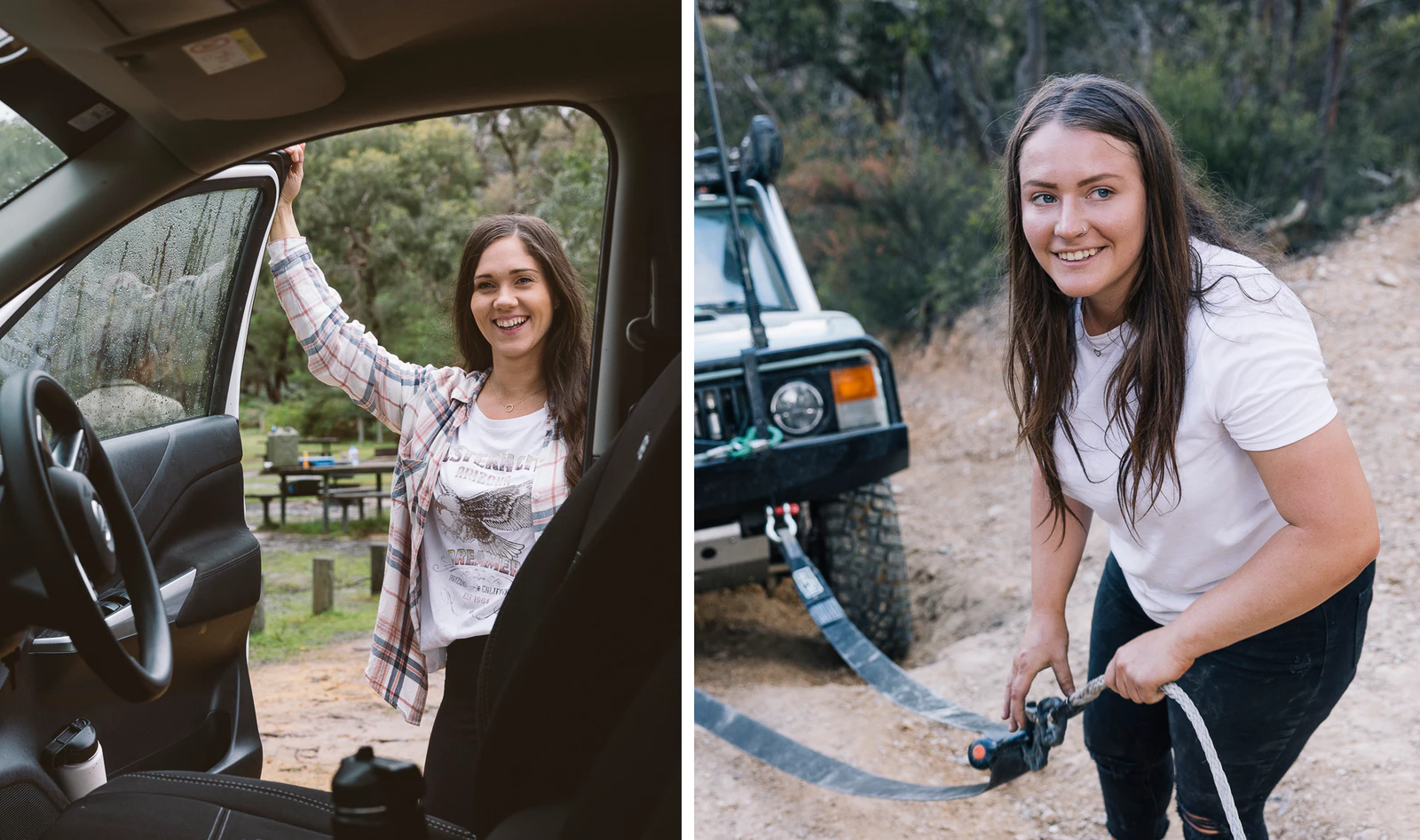
The right way
Meet Steph Pond and Jess Saddlier, Australian adventurers working hard to carry on the legacy of responsible off-roading today. After meeting in an all-girls 4x4 club, Steph and Jess became fast friends, passionate outdoorswomen, and community champions. Together, they organize group off-roading excursions and recently embarked on a new adventure: a forthcoming off-roading community and education resource called OFFMAIN.
Steph was inspired to create OFFMAIN after seeing a few too many pieces of bad or incomplete advice shared online and during trips. Currently, folks who want to get into off-roading have only a few learning opportunities: they can learn from a friend, they can read tips in forums and social media groups online, or they can show up to a club meeting or trail ride and ask the right questions.
These are by no means bad sources of information, but they’re not always fact-checked, edited for clarity, or safety-tested in the field. Through OFFMAIN, Steph and Jess will work to close some of those gaps, offering drivers, especially women, a space of authority to learn how to off-road the right way. Because there is a right way. One that keeps everyone safe, respects the land, minimizes damage to the wild, and offers up maximum fun along the way.
We sat down with Steph and Jess to learn more about off-roading the right way. The following are their four tenets for responsible off-roading.
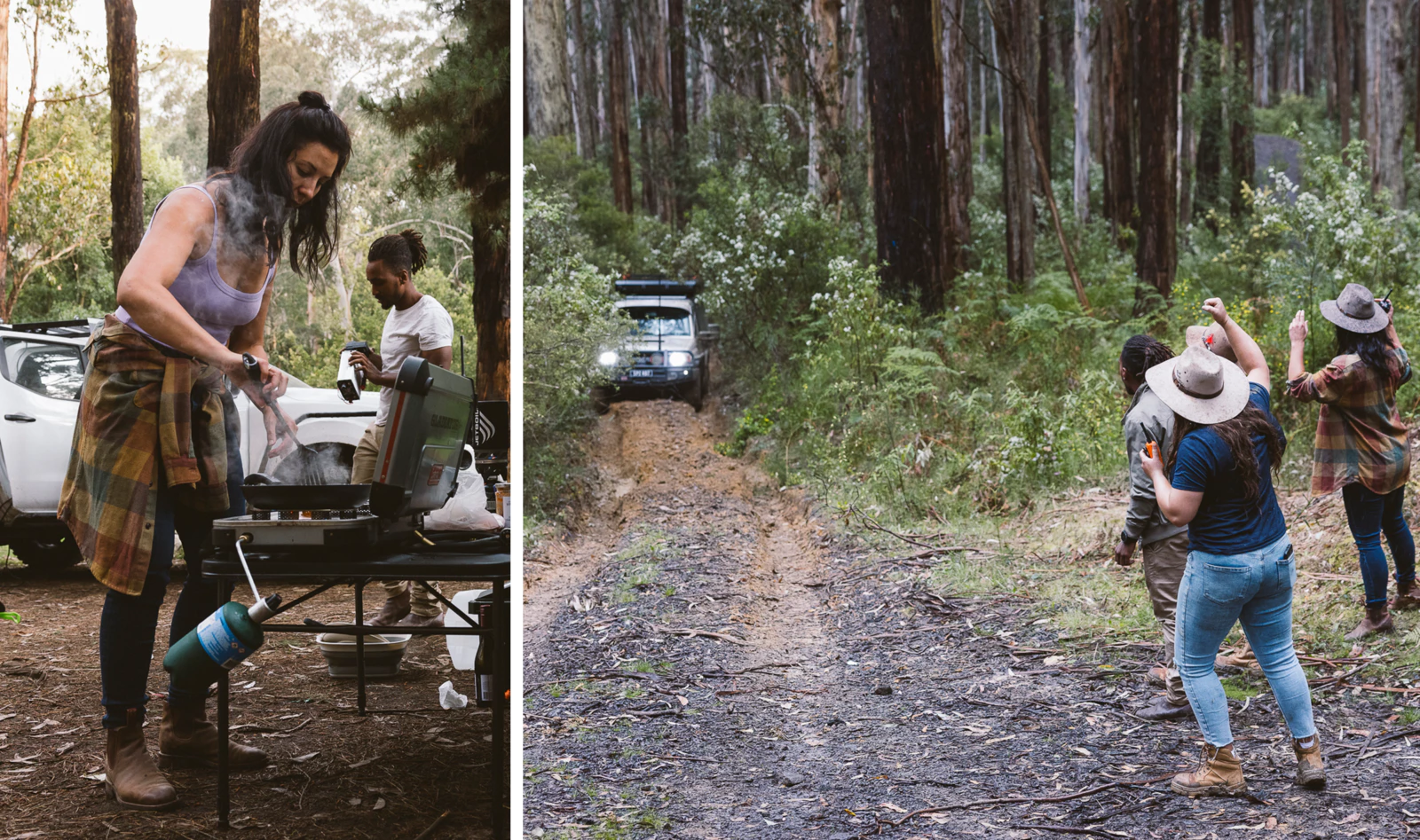
1. don't go alone
When you travel on your own, you travel under-prepared. Because even if your rig is packed to the gills with all the right gear, something can always break or get lost. Ask any soldier, EMT, or rocket scientist: you’re not truly prepared if you don’t have redundancy. If you’re out with several other fully-prepared off-roaders, a broken winch is no sweat. But if you’re on your own and need to make a recovery, a broken winch is a huge problem.
Traveling with a group also lowers your individual ecological footprint while overlanding. Camp cooking for a group, for example, is more energy-efficient and less wasteful than camp cooking for one. Community also offers extra sets of eyes when spotting animals in the dark, noticing damage on the trail, or cleaning up around camp. Plus, there’s always good old-fashioned peer pressure for being safe and responsible out in the wild.
“Being with friends is great for holding us accountable out in the bush. I’ve also noticed that social media does this, too. No one wants to post a photo of an ugly campsite online, so they tidy up. And when you post about off-roading, if you put even one toe out of line, there will be people in your comments ready to tell you about a better way..” – Steph Pond
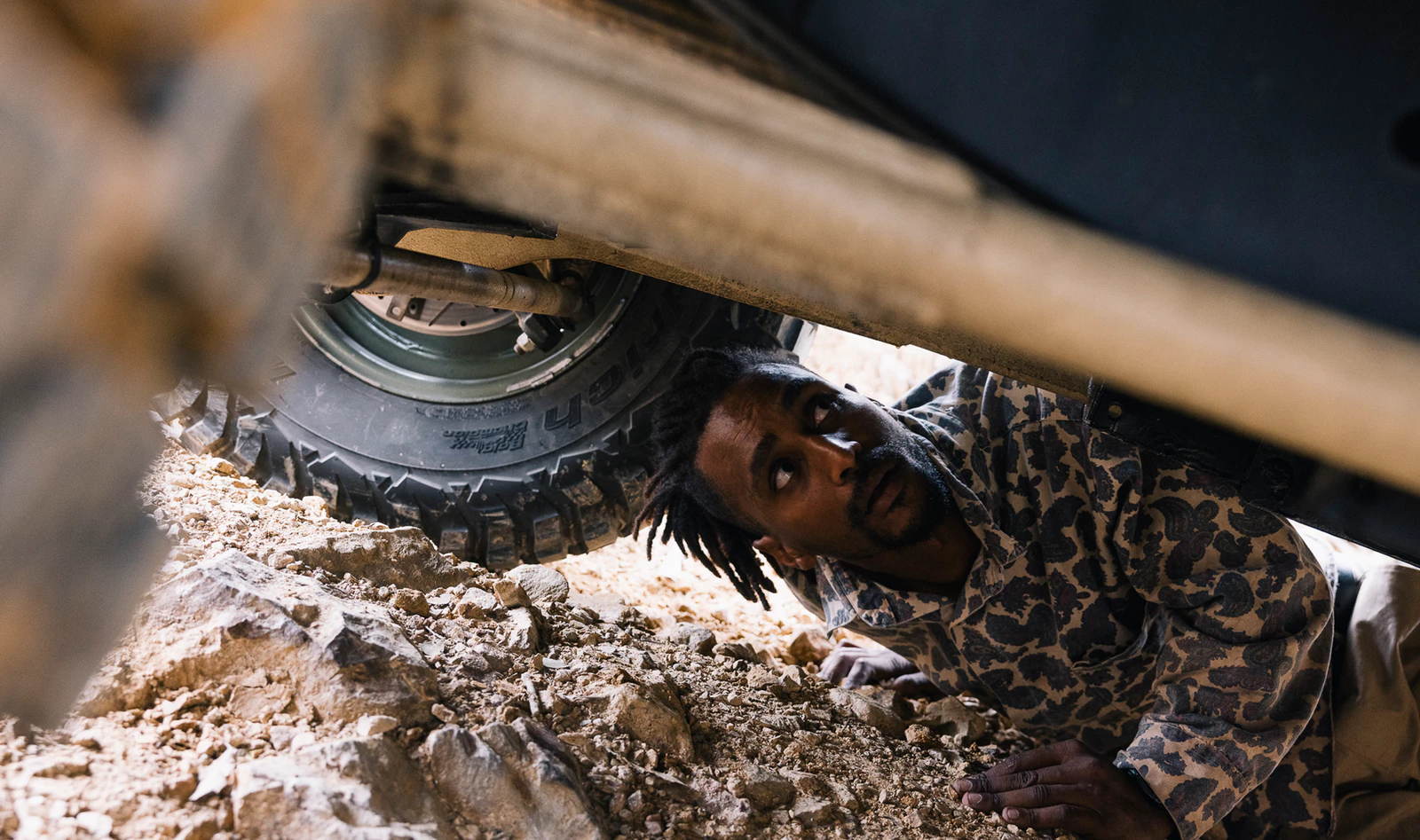
2. Know Your Limits
When you’re off-roading, limits are everywhere. Hills can be too steep. Clearances can be too shallow. And most common of all: blind spots can hide obstacles. When traveling slowly and steadily through a complex ravine, it’s easy to forget what’s right in front of you. When in doubt: ask for a spot.
“We have a friend who will tell us, ‘I forgot what’s in front of me’ all the time. It’s like her catchphrase. But it’s cool. She communicates the issue, and it’s remedied in a few seconds. A lot of people don’t want to seem needy on the trail but keep in mind: performing spot for a driver is much easier and quicker than helping them tow their car out of a hole they accidentally drove into.” – Steph Pond
When in the middle of a difficult trail section, often the least objective view of the situation is the one from the driver’s seat — psychologically as well as physically. Jess, for example, nearly tipped a car on a recent trip but insisted to the group that she had things under control. Luckily, she was fine. But, upon looking at the video footage later in the day, she saw just how much that sense of control she felt was an illusion.
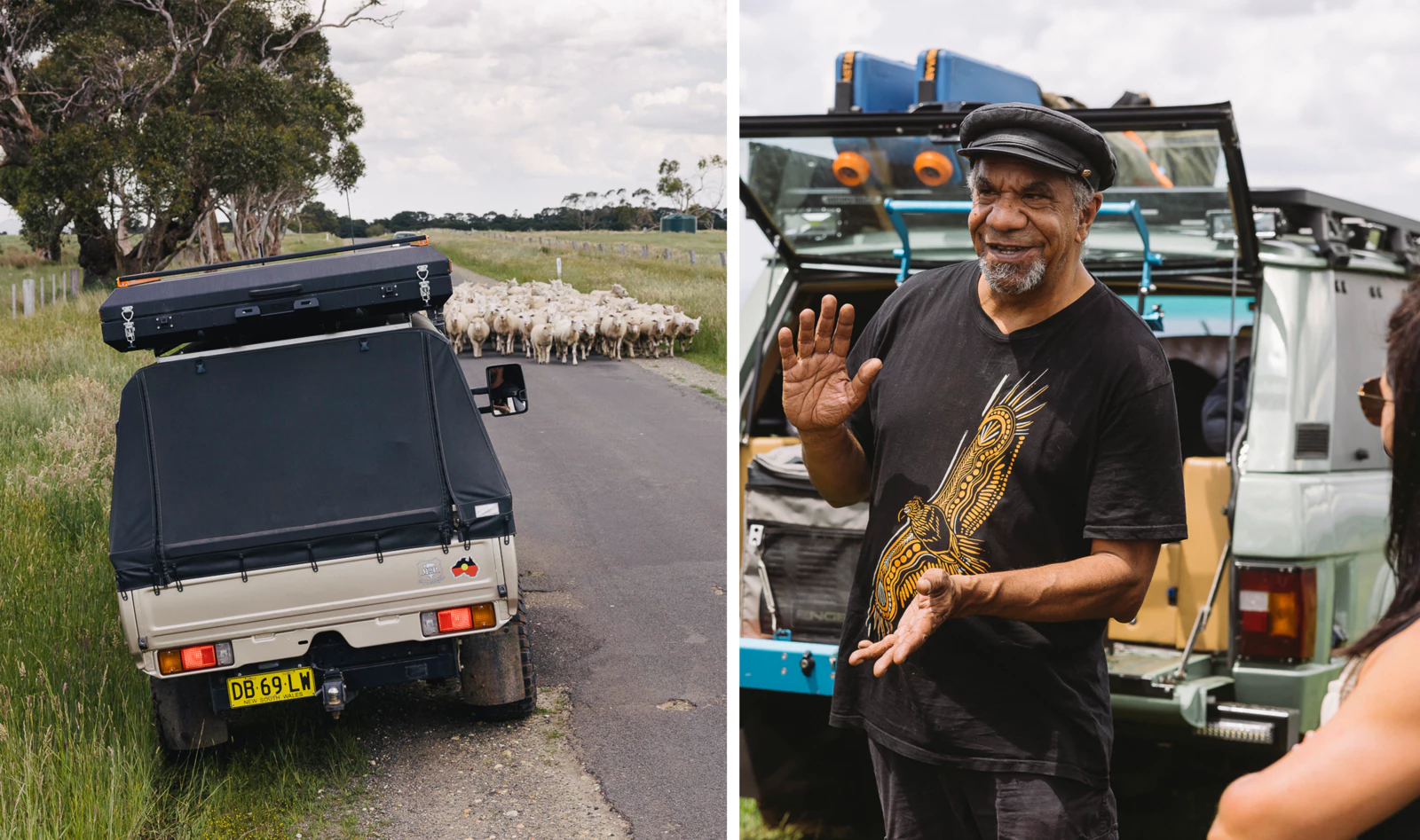
3. Respect the land and people
“I’ll be honest: I did not fully understand this part of off-roading when I was younger. It’s a sign of maturity for me now. As a driver, I don’t take you seriously if you don’t take respect seriously.” – Steph Pond
How to respect the land and people while off-roading
Educate yourself before you head out. Learn about the land you are visiting. Review the terrain and the wildlife you may encounter. Are any species there endangered or vulnerable? Is there private property you need to avoid? Which aboriginal cultures occupy or occupied this land? What does the forecast look like? Are trails open?
Run the right tires for the terrain you expect to encounter. When off-roading, it’s recoveries and accidents that impact the environment the most. By running the best available tires, you limit the opportunity for those situations, shrinking your overall environmental footprint. Buy once, and buy right when shopping for vehicles, tires, and other kinds of gear. If the more expensive option will last you considerably longer, in the long run, it's less expensive for you and it’s better for the environment, too.
Know your gear. Don’t let an emergency be the first time you open up that First Aid Kit. Know where all your gear is and how to use it. Whenever possible, purchase items that are reusable to eliminate possible trash you might leave behind at a campsite.
Don’t leave gear behind. That celebratory moment of getting a vehicle running again or back on four wheels can be a distracting one. If you have to solve a problem out on the trail, pat yourself on the back and then sweep the area to gather all the tools you used in the process.
Recover right. Keep up-to-date and well-maintained recovery gear with you at all times. Gear can corrode and weaken over time when exposed to the elements, and many safety industry advancements have been made in the last few years. Today, recovery gear is available that is made of softer materials that cause fewer breakage-related injuries and wider straps that don’t damage tree bark. Invest in these latest items for your kit.
Don’t spin your wheels if you lose traction while driving. You’ll tear up the trail and likely dig yourself deeper into that rut. Loss of traction has many causes with many solutions. Tools like traction mats can help in softer terrains like mud, sand, and snow. Especially on hills, momentum is your friend. Put it in reverse and try again. Additionally, there’s no shame in turning around and going back the way you came. It’s certainly more fun than being stuck all day.
Respect all places. This includes historical, archeological, paleontological sites, and private property. Don’t take home any souvenirs. Just photos and memories. Avoid creating any unnecessary noise. Do not idle your engine if you don’t need to. Maintain reasonable speed, don’t drive a poorly tuned vehicle, blast loud music, or rev your engine. These noises can disturb wildlife.
Share the trail. Yield to bikers, hikers, horses, wildlife, and livestock. Give vehicles that are going uphill the right of way. Don’t follow other vehicles too closely. And if you pass anyone on the trail, let them know how many vehicles are in your party. And finally, avoid parking or stopping on a trail without needing too, especially around blind hills and curves.
Stay on the trail, down to the inch. If you encounter an obstacle, try to drive over it, not around it. Drive within the trail’s current boundaries, so that you and your party are not contributing to widening the trail, which over time ruins plant life around it.
Stay off closed trails and any trails where your vehicle is not welcome. If a forest service or local government made the choice to close a trail or restrict access for large vehicles, trust that they had a good reason to do so and heed their warning.
Wash your vehicle thoroughly after each trip. This will prevent the spread of any invasive plant or animal species. If you brought a boat, jet ski, or other trailered toy along for the ride, be sure to thoroughly wash that too.
Always Tread Lightly! (A great resource for even more tips.)

4. Pack it in, Pack it out
“Leave no Trace” is a simple idea but a deceptively complex behavior. It takes practice to get consistently right. Human traces come in many shapes: fire, sound, trash, food waste, biological waste, tire tracks, engine exhaust, and more. Not all traces are visible to the human eye, and not all footprints are literal. Cultivate awareness of yourself and your habits. Think about how your presence affects where you are and what lives there after you go home. Take back everything you bring with you, and save some room so you can bring home extra trash as well.
“We have a cool program down here in Australia called One in Two Out. So you actually take two rubbish bags out — and these are big reusable rubbish bags — one to fill with your own trash and another to fill with other trash you find on your trip. We see so much rubbish out in the bush. Even on just a weekend trip, you'll easily come home with an extra bag. Imagine if everyone did that.” – Jess Saddlier
Leaving no trace is doable enough in the right circumstances. But when things go awry on a trip, that’s often when big traces are left. For example, accidents widen trails and leave bits of plastic and metal behind. Recoveries leave marks on trees and gear on the side of the trail. Breakdowns leave oil spills or greasy, broken parts behind. And really bad situations force us to camp in areas where we usually wouldn’t, building fires, pitching tents, and cooking food in areas not designated for such activities. It goes to show the interconnectedness of our actions their consequences. Each thing you do the right way adds up, keeping yourself and others safe and lowering your overall footprint.
The wrong way
“It’s a privilege to be able to access places untouched by humans — a privilege that can be taken away. We’ve seen it in Australia. People were out doing the wrong thing in the wrong place, causing damage, and now that area is shut off for all of us.” – Steph Pond
We see it happening all around the world. Forest services, land managers, and local governments who are tasked with maintaining and protecting popular off-roading destinations are sometimes forced to make decisions to restrict access, limit activities, or remove the presence of motorized vehicles entirely from certain areas of vulnerable or unsafe land. These choices are most often made in the face of unfortunate weather, uncontrollable traffic, and irresponsible off-roading behavior.
It’s pretty simple: when we off-road the wrong way, when we decline to be our own refs, we shrink the sport. We fail the community. And we curb the beauty of the wild places we build our rigs to reach.
“The whole reason we do this is for the destinations and the memories we form there together. We go to great lengths to reach these remote locations because they are special. And if something’s worth traveling so far to see, it’s worth the extra effort to protect it, too.” – Jess Saddlier
The destination is worth it. The sport is worth it. The legacy is worth it.
And the journey is too.
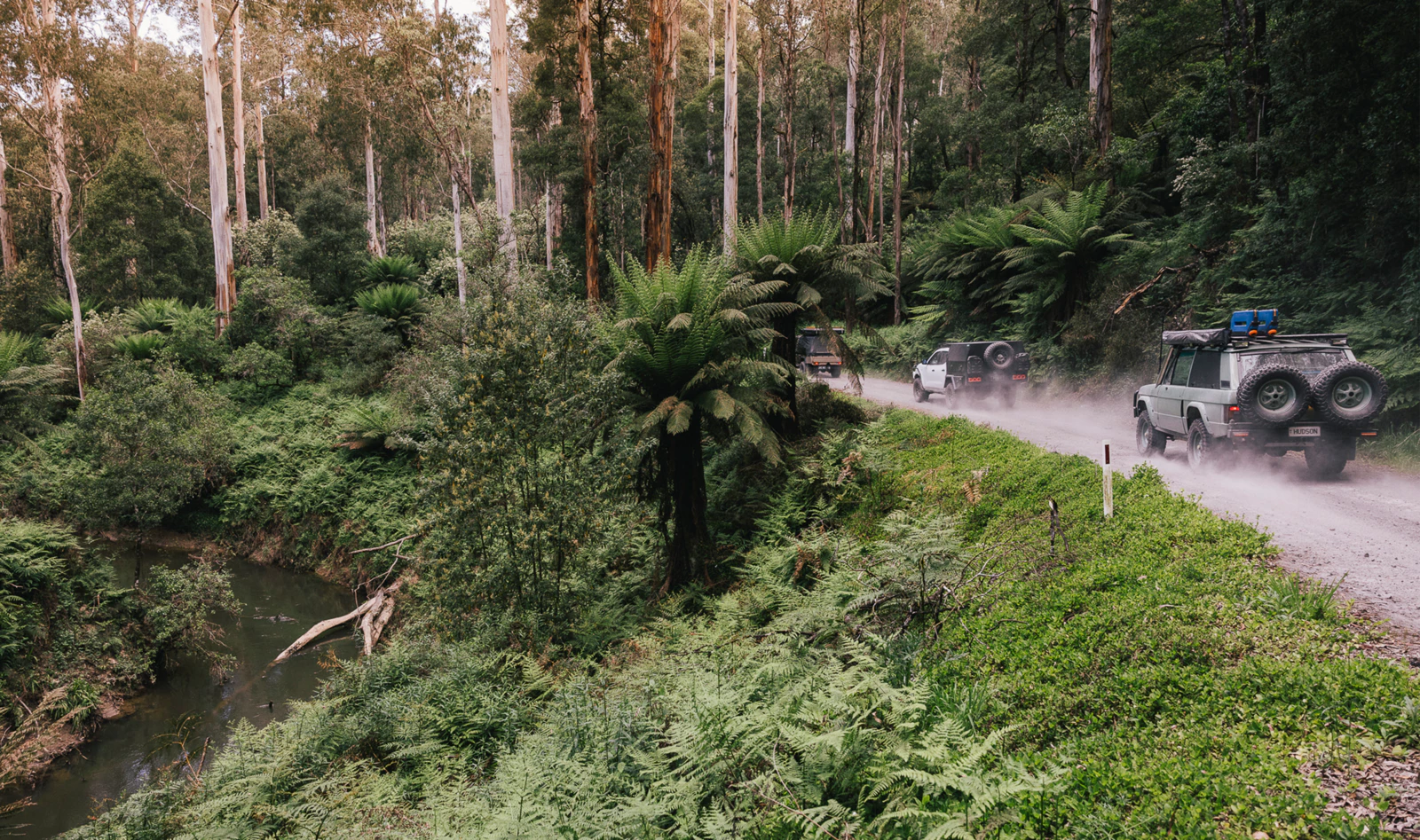
NEED MORE HELP TO PLAN A TRIP
Our Trip Planning section gives lots of helpful information to get you started.




